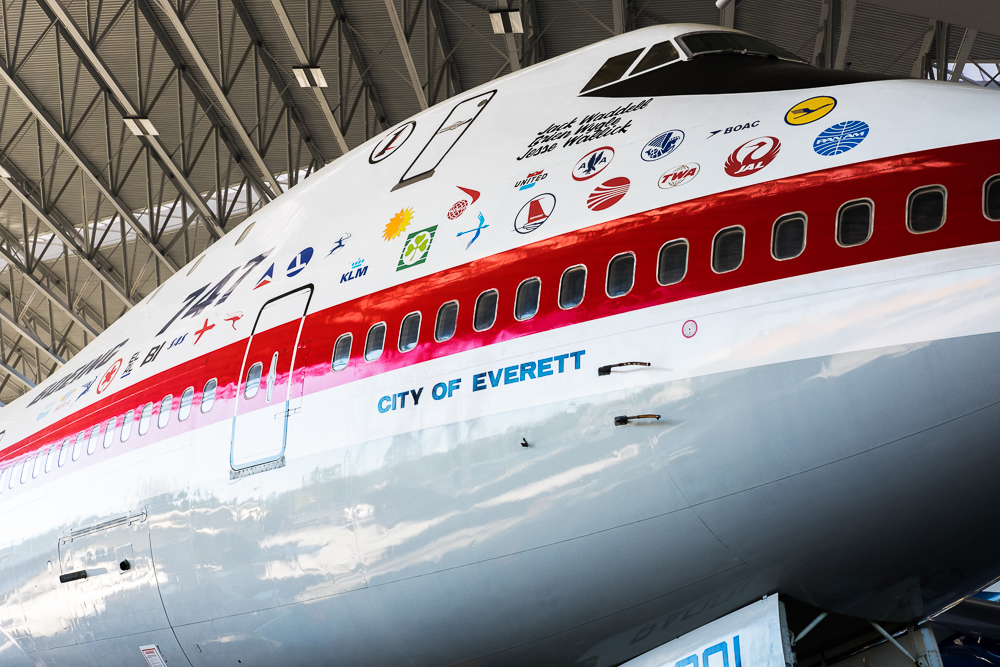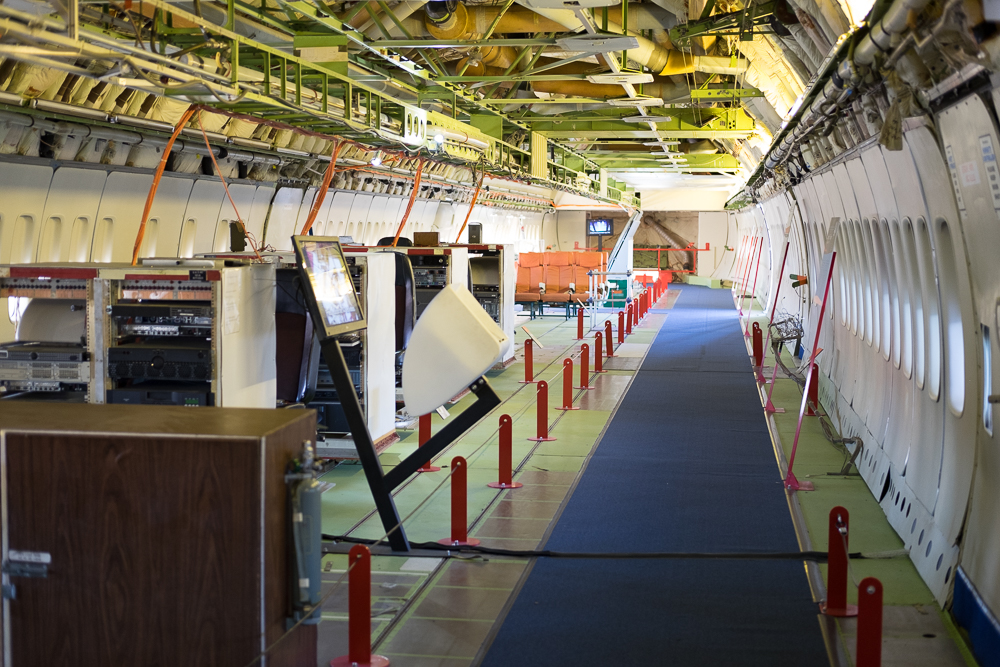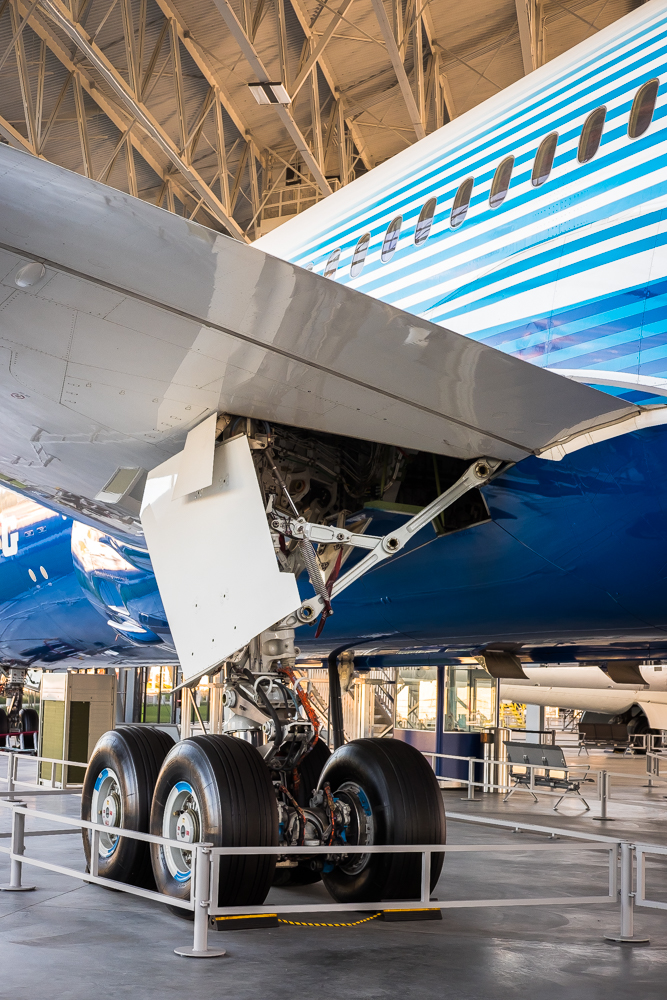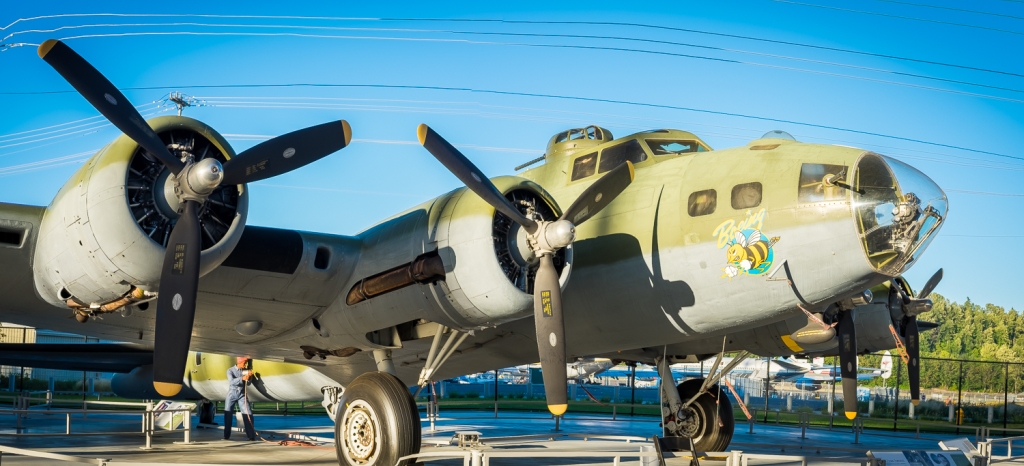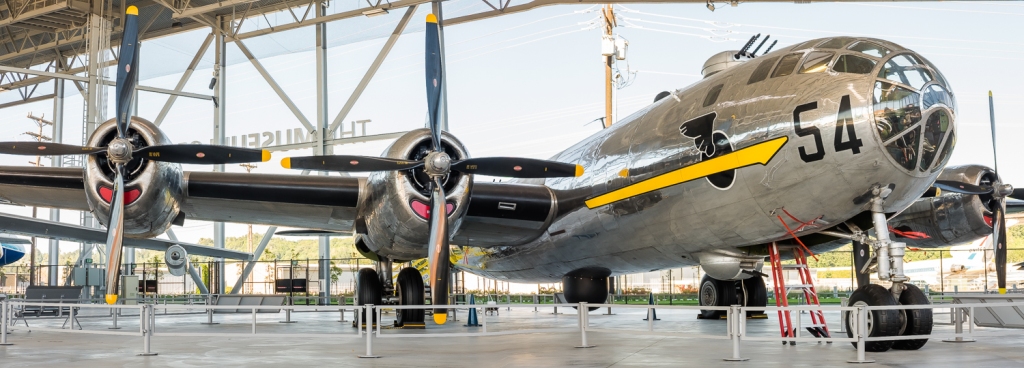These Are Some Big Planes
The Aviation Pavillion at the Boeing Museum of Flight is home to some of the largest and most legendary commercial and military aircraft. The pavilion sits on the West Campus of the museum, across E. Marginal Way from the main building. My previous post on the museum focuses on the Airpark, WWII and other exhibits on the East Campus. The Aviation Pavillion is home to the museum’s B-17F, B-29, original 747 prototype, and 787 Dreamliner prototype, and other civilian and military aircraft. There is also a Concorde and an array of Grumman fighter jets…insanely incredible pieces of aviation history. You can even board and explore the 787 and 747. The 747 is interesting because the huge interior is devoid of the usual passenger seating. Instead, it’s outfitted with a few engineer monitoring stations, and a sample of the aluminum barrels that were filled with water to simulate real passengers during its test flights.
To think that all these tons of hardware become airborne is hard to fathom.
The immensity and complexity of the 747 and the 787 is mind-boggling. The exposed insides of the airplane interior are packed with thousands of wires, conduits and hydraulic lines. Interestingly, the interior of the Hughes Flying Boat, known in the vernacular as The Spruce Goose, is equally as complex-looking, and that massive aircraft was built 35 years earlier. Indeed, it served as the prototype for many aircraft systems in use today, most notably the hydraulics used in every modern jet aircraft to control the flight surfaces. These systems were first developed by Howard Hughes and his engineers, and we can thank them for pioneering the aviation technology that has become integral in today’s planes.
787 Dreamliner
Seeing the 787 prototype test plane parked in line with with the legendary 747, B-29 and B-17F seems a bit at odds with the historic aspect of the exhibit. These other planes are 46 years and older and you wonder, why is this new one sitting here? But the Dreamliner has made some history of its own and is the latest addition to this pantheon of aviation technology. The 787 has broken new technological ground in commercial aircraft development with its new hi-tech composite construction, state of the art jet engines with unparalleled fuel efficiency, and cabin design that reduces passenger fatigue and actually makes them feel better. So while it may be the newest, most advanced jet liner around it has already achieved legendary status in the commercial aviation industry, and in helping airlines to be more profitable. Do I sound like a Boeing commercial? I guess I can’t help but be excited about a company that makes the coolest products on the planet…and the 787 Dreamliner is certainly one of them. When you enter the cabin it’s even got that ‘new car’ smell, though it was first flown in 2009 and certified by the FAA that same year (and also saw its first deliveries). Definitely check it out at the Aviation Pavilion and you may want to take a look at the stunning Boeing website for it as well.
These huge planes are simply breathtaking to see. To think that all these tons of hardware become airborne is hard to fathom. But while I’m mentioning my favorites here, there are also two of Boeing’s legendary military “giants” on display.
B-17F Flying Fortress
You just can’t say enough about this workhorse bomber aircraft. The museum’s plane is the only airworthy B-17F in the world.[1] This particular B-17—now named the “Boeing Bee”— was built in Seattle at Boeing Plant No.2 in February of 1943. It saw no combat, but was used as a trainer and has lived a varied life in many places around the world in its 70-plus years. It also appeared in several WWII movies including Tora, Tora, Tora, and Memphis Belle. It spent time on both sides of The Atlantic during the war and after (it was back to England for the shooting of Belle) and was converted to a tanker in the 1960’s and used to fight fires and spray DDT. When the Museum finally acquired it in the early 1990’s it was in flyable but rough shape. Volunteers spent years restoring it to its full military configuration and FAA certification. Over 12,700 B-17’s were produced by Boeing, Lockheed and other manufacturers from 1936 to the end of WWII. About 10 aircraft are currently airworthy, and the Boeing Bee is one of them.
B-29 Superfortress
This airplane was a significant level above earlier heavy bombers like the B-17 and B-24. With its longer range (5,592 mi), heavier payload, faster speed (350 mph), high altitude (31,850 ft.) and pressurized cabin, the B-29 revolutionized WWII-era bombers.[2] Its higher altitude capability meant it was essentially out of range of Japanese fighter aircraft, and its 357mph top speed meant that even if they could get to that altitude, they couldn’t catch it.[3] It was designed as a long range heavy bomber and put bombing missions over Japan within easier and more comfortable reach.
The B-29 is a complex machine and it was complex to manufacture, requiring four separate main assembly plants across the country. It was also the most expensive weapons project undertaken by The United states during WWII, costing even more than The Manhattan Project.[4]
The B-29 was designed with 4 remote-controlled gun turrets allowing one man to operate two turrets through analog computer-assisted sights. The B-29’s early flights weren’t without problems, though. The original power plants, 4 Wright R-3350 Duplex-Cyclone radial engines had serious reliability issues, and caused a fatal crash of the second prototype killing 31 people (including the 10-man crew). These engines were later replaced with the Pratt & Whitney R-4360 Wasp Major, the same engines used on Howard Hughes’ Spruce Goose and XF-11. But this engine didn’t become available until after WWII. Still, the B-29 was so technologically advanced that it continued in service until well after the war. Of course, the bomber’s biggest claim to fame is that two of its type, Enola Gay and Bockscar, carried the A-bomb to Hiroshima and Nagasaki in August 1945. Those two planes are on display at the Smithsonian National Air & Space Museum and the National Museum of the United States Air Force, respectively.
These 4 legendary aircraft are the frontline attraction in the Aviation Pavillion. And they are my focus…and favorites. But there are many other airplanes to see as mentioned above, so be sure to include the West Campus in your visit.
Works Cited
1. “Boeing B-17 Flying Fortress.” The Museum of Flight, http://www.museumofflight.org/aircraft/boeing-b-17f-flying-fortress. Accessed 7 Sept. 2016.
2. “Boeing B-29 SuperFortress.” The Museum of Flight, http://www.museumofflight.org/aircraft/boeing-b-29-superfortress. Accessed 7 Sept. 2016.
3. “Boeing B-29 SuperFortress.” Wikipedia, https://en.wikipedia.org/wiki/Boeing_B-29_Superfortress. Accessed 7 Sept. 2016.
4. “Boeing B-29 SuperFortress.” Wikipedia, https://en.wikipedia.org/wiki/Boeing_B-29_Superfortress. Accessed 7 Sept. 2016.

